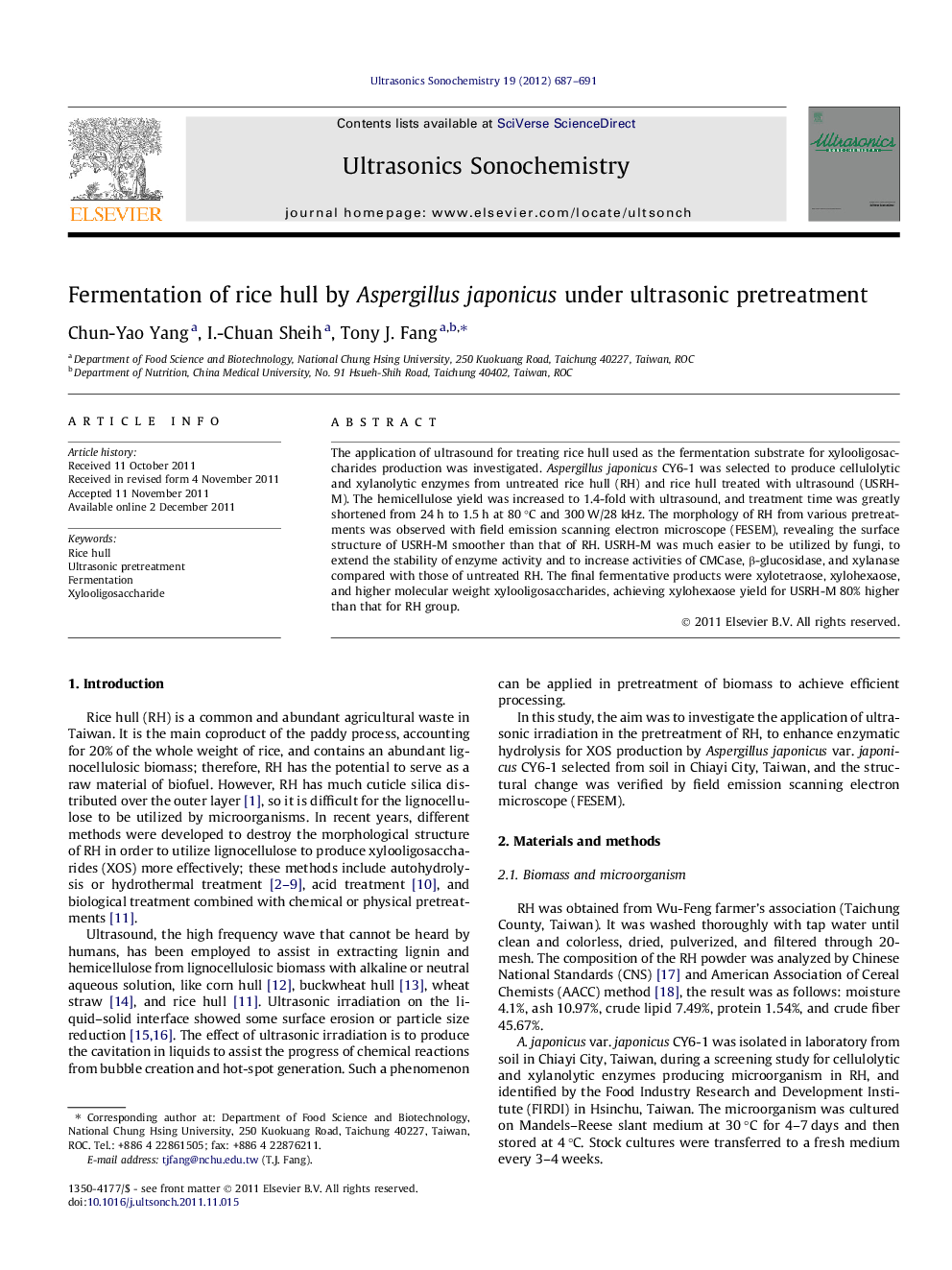| Article ID | Journal | Published Year | Pages | File Type |
|---|---|---|---|---|
| 1265416 | Ultrasonics Sonochemistry | 2012 | 5 Pages |
The application of ultrasound for treating rice hull used as the fermentation substrate for xylooligosaccharides production was investigated. Aspergillus japonicus CY6-1 was selected to produce cellulolytic and xylanolytic enzymes from untreated rice hull (RH) and rice hull treated with ultrasound (USRH-M). The hemicellulose yield was increased to 1.4-fold with ultrasound, and treatment time was greatly shortened from 24 h to 1.5 h at 80 °C and 300 W/28 kHz. The morphology of RH from various pretreatments was observed with field emission scanning electron microscope (FESEM), revealing the surface structure of USRH-M smoother than that of RH. USRH-M was much easier to be utilized by fungi, to extend the stability of enzyme activity and to increase activities of CMCase, β-glucosidase, and xylanase compared with those of untreated RH. The final fermentative products were xylotetraose, xylohexaose, and higher molecular weight xylooligosaccharides, achieving xylohexaose yield for USRH-M 80% higher than that for RH group.
► Ultrasonic technology was applied to treat rice hull to product xylooligosaccharides. ► The best ultrasonic conditions were 300 W, 28 kHz, 80 °C, 250 mL vessel-type and 1.5 h. ► The treated time could be shorten, achieving 1.4-fold hemicellulose yield of RH. ► The fermentative products were xylooligosaccharides by Aspergillus japonicus CY6-1. ► Xylohexaose yield for USRHM achieved 80% higher than that for RH group.
